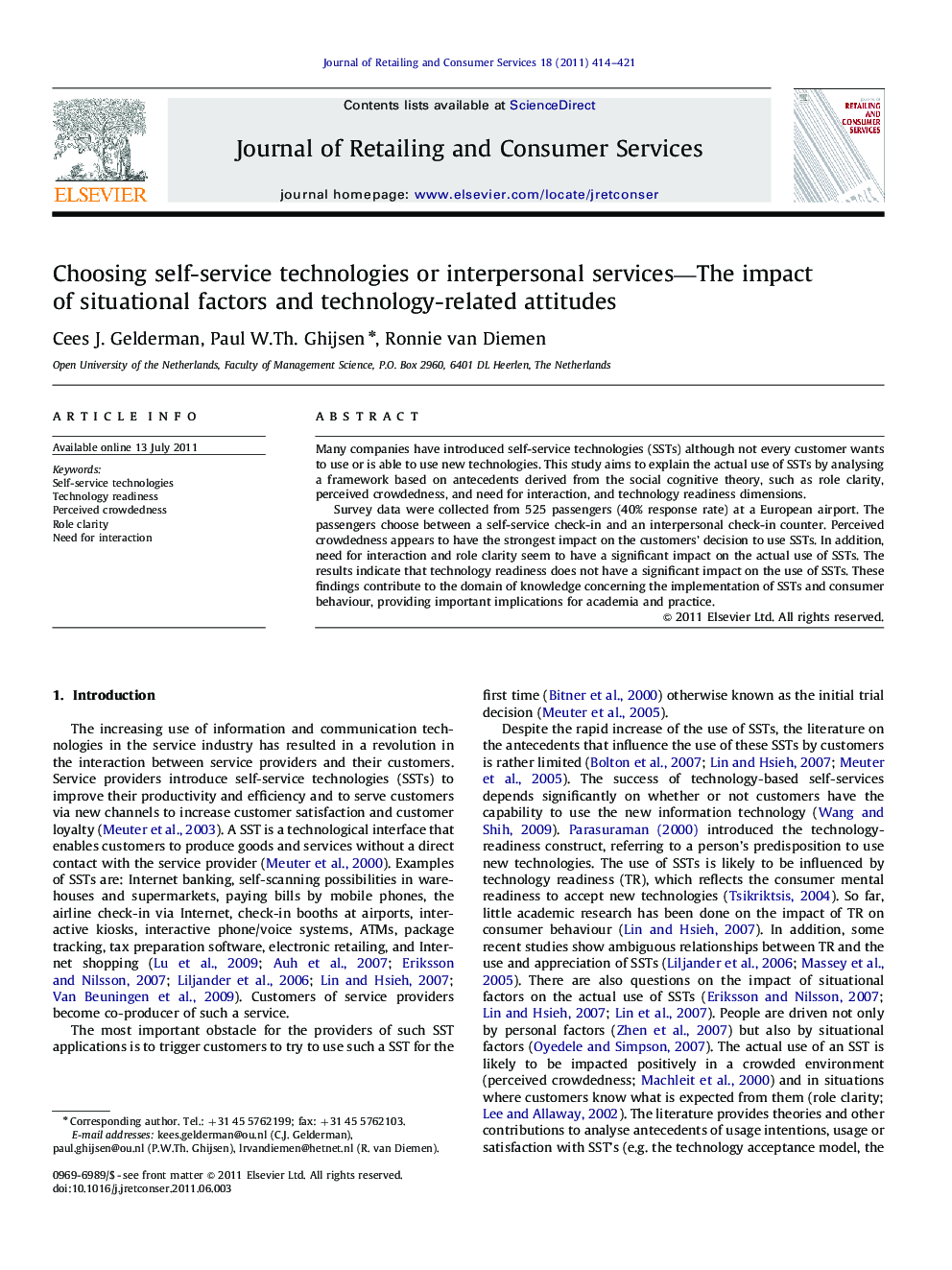| Article ID | Journal | Published Year | Pages | File Type |
|---|---|---|---|---|
| 1029377 | Journal of Retailing and Consumer Services | 2011 | 8 Pages |
Many companies have introduced self-service technologies (SSTs) although not every customer wants to use or is able to use new technologies. This study aims to explain the actual use of SSTs by analysing a framework based on antecedents derived from the social cognitive theory, such as role clarity, perceived crowdedness, and need for interaction, and technology readiness dimensions.Survey data were collected from 525 passengers (40% response rate) at a European airport. The passengers choose between a self-service check-in and an interpersonal check-in counter. Perceived crowdedness appears to have the strongest impact on the customers' decision to use SSTs. In addition, need for interaction and role clarity seem to have a significant impact on the actual use of SSTs. The results indicate that technology readiness does not have a significant impact on the use of SSTs. These findings contribute to the domain of knowledge concerning the implementation of SSTs and consumer behaviour, providing important implications for academia and practice.
► Technology readiness and social cognitive theory were used to analyse the actual use of SSTs. ► Customers actually chose between self-service check-in and interpersonal check-in counter. ► Perceived crowdedness appears to have the strongest impact on the customers' decision to use SSTs. ► The need for interaction and role clarity seem to have a significant impact on the actual use of SSTs. ► Technology readiness does not seem to impact the customer's choice to use of SSTs.
